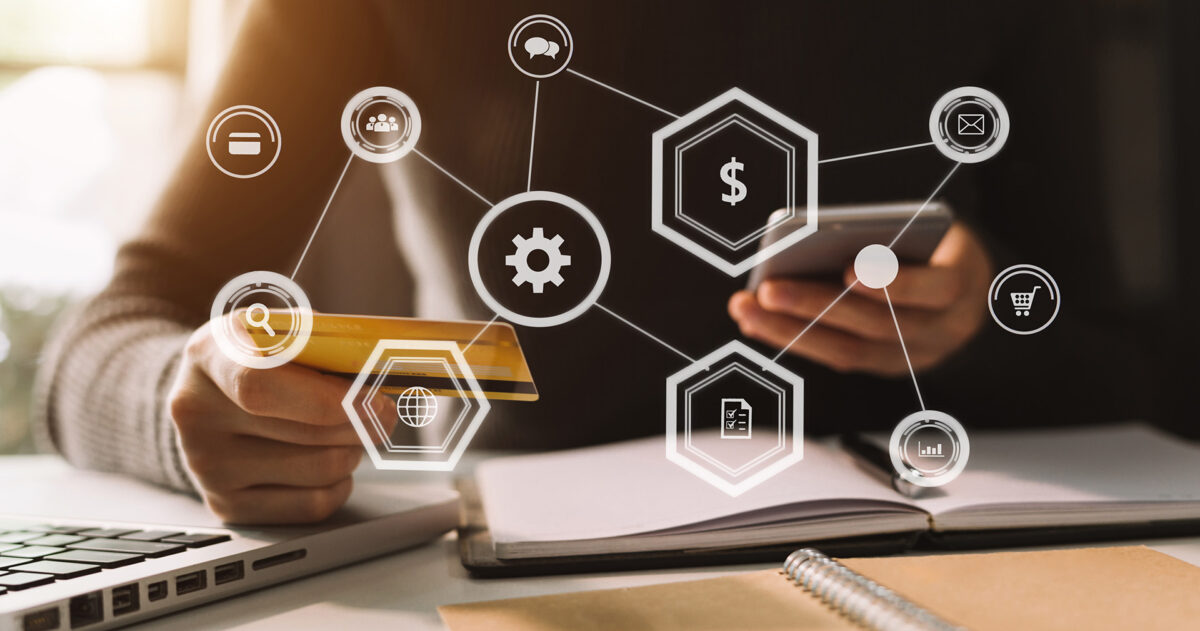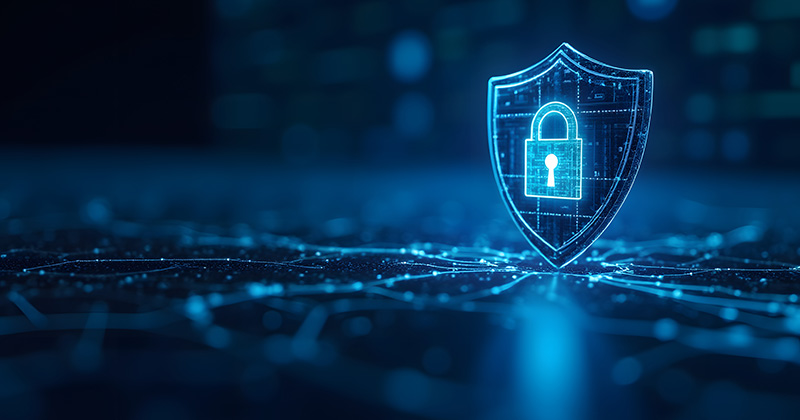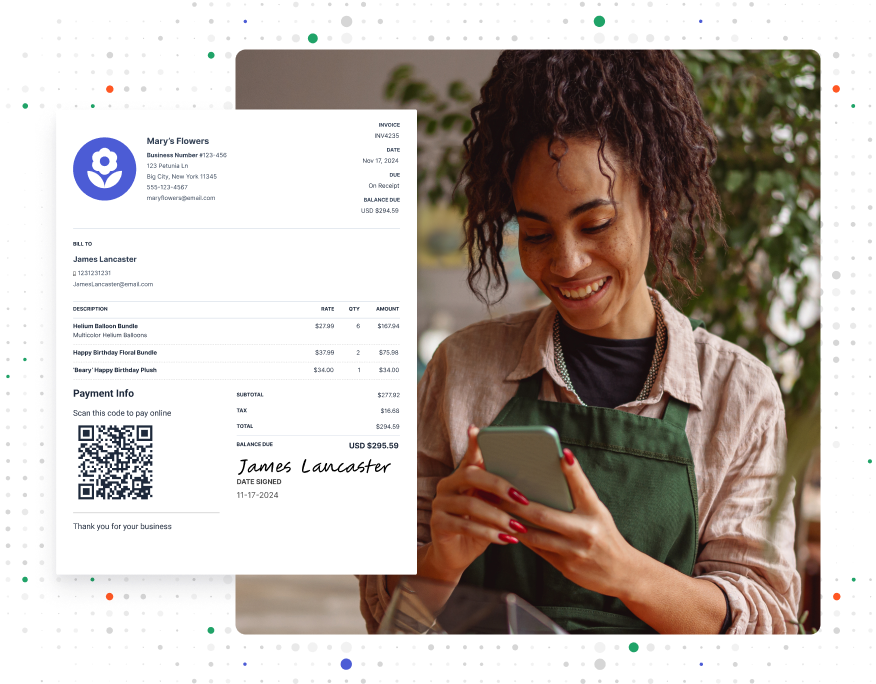The Future of Payment Processing: 8 Payment Trends Small Businesses Need to Watch

Payment processing has come a long way. Cash and check are on the out. Digital payments are taking their place.
And, as put by the Bank of America, “now that digital behavior has been ingrained, there is no turning back.” You either adapt and thrive or get left behind.
The good news is that many new and emerging payment trends don’t just benefit your customers. They help your business, too.
In this article, we’ll investigate how payment processing has evolved. We’ll explain why you need to keep up before diving into our top eight trends to watch.
We’ll touch on everything from contactless payments to software integration, cryptocurrency, and biometric authentication.
To finish, we’ll share some tips on how to use these trends to better your business. So, grab a coffee, get comfortable, and explore the future of payments.
The Evolution of Payment Processing
Technology has changed a lot of things about how we live and work. It’s also reimagined how we pay.
Way back when cash and checks reigned supreme. But things are different now. Today’s consumers don’t want to carry cash around. They want fast payment options that demand minimal manual effort.
Enter digital payment processing.
In 2023, nine in 10 consumers used some type of digital payment. This might be a mobile wallet or online payment processor, for example.
In contrast to digital payments, cash use decreased by 50% between 2016 and 2023.
It’s natural to think of digital payments in relation to online shopping. But these payment methods have become commonplace. Many prefer them for day-to-day expenses.
For example, 85.2% of people would like bills to include a QR code leading to a payment app.
Digital payments are here to stay, too. In fact, they’re expected to become even more entrenched. According to McKinsey’s analysis:
“The industry has been through three distinct eras, dominated, in turn, by paper, plastic, and account-based transactions.”
What’s next? The analysis continues:
“Users will have an even greater voice as they seek convenience, affordability, and security.”
RELATED ARTICLE: 9 Advantages of a Cashless Business
Staying Current with Payment Trends
Your job is to serve your customers as best you can. It’s also your passion.
This means continuously improving your service. It means refining the customer experience you offer.
Payments are a big part of this experience. And so, the payment process is something you should work hard to optimize over time.
This is why you need to keep up with the latest payment trends. You want to invest in upgrades or changes that align with shifting expectations.
In other words, you want to get the most bang for your buck.
If you can stay one step ahead, you become more competitive. You stand out in your local market.
So, what payment trends should you be aware of? From contactless payments to cryptocurrency and beyond, let’s find out.
Trend 1: Mobile Wallets and Contactless Payments

It’s no secret that our smartphones have become an integral part of our lives. It follows that mobile wallets like Apple Pay and Google Pay are increasing in popularity.
Apple Pay, for example, has a staggering 507 million users worldwide. Almost 90% of phone users have sent or received money via a mobile app.
Mobile wallets are part of the bigger contactless payment trend. Contactless payments are payment methods that operate without a direct physical interaction.
Tap-and-go payments are another example of contactless payments. These use near-field communication (NFC) technology to send payment data to a card reader.
More broadly, mobile wallets and contactless payments are extremely convenient for in-home services. Clients can pay on the spot. It’s fast, secure, and hygienic if that’s a concern for your customer base.
Trend 2: ACH Payments for Streamlined Transactions
Automated clearing house (ACH) payments are a lot like wire transfers—only cheaper. Payments are processed via the ACH network. Funds are delivered directly from one bank account to another.
ACH payments have been around for a while, but more recently, they’ve experienced an uptick in growth. In 2023, the ACH network volume increased by 4.8%. A total of 31.45 billion payments were made, with $80.1 trillion transferred.
The ACH network supports a few different kinds of payments. One worth noting is ACH checks. These are sometimes called e-checks or paperless checks.
They operate much like conventional checks, but the exchange and transfer happen electronically.
What’s handy about ACH checks is the ACH check capture process. This lets the processor keep a small percentage of a payment.
If the customer requests a return, funds are available. This reduces your credit risk.
Another benefit of ACH payments is lower fees. Credit card payments come with fees of up to 3.5% plus an additional fee of 10 to 30 cents per transaction.
ACH payment fees are about 1%. They are also capped, which makes them an excellent choice for larger transactions.
FROM ONE OF OUR PARTNERS: What Are ACH Transactions? Everything You Need to Know
Trend 3: Buy Now, Pay Later (BNPL)
Buy Now, Pay Later payments let consumers break costs into smaller payments. The BNPL provider essentially lends the buyer the funds. Then, the buyer pays back the amount over time.
Unlike credit cards, many BNPL options have zero interest fees. If each installment is paid on time, customers can break up larger purchases without accruing interest. However, late payments will likely incur a fee or interest rate.
No interest is one reason 62% of BNPL users trust BNPL providers more than credit cards. It’s also why more people are using BNPL than ever before. In 2023, 14% of Americans used BNPL, up from 12% in 2022. Overall, 49% of people have used BNPL at least once since it became available.
As a business owner, BNPL offers several benefits.
Most importantly, you’re still paid in full upfront. The BNPL provider, like PayPal, sends you the full purchase amount (minus the processing fee) and takes on the risk of collecting the future installments.
That means your cashflow is not impacted by BNPL. Further, this payment option can increase sales. It makes large purchases more manageable by breaking them into smaller payments.
With the rising cost of living, BNPL has become an excellent option for costlier services like HVAC installations or electrical work. Your customers can get the fixes they need today without the upfront payment. This doesn’t affect your cash flow, either.
Trend 4: Cryptocurrency as an Emerging Payment Option
Cryptocurrency is a type of digital payment. It uses what’s called the blockchain.
This technology makes payments secure and anonymous. It also allows transactions to take place directly between two parties—no intermediary is needed.
There are many different cryptocurrencies out there. But the original, Bitcoin, is the most used.
Bitcoin and other cryptocurrencies were once very niche. That’s changed a lot over the past few years. Two in five American adults own crypto—that’s about 93 million people.
If you want to stand out and appeal to tech-savvy customers, you might add cryptocurrency to your accepted payment methods.
A quick word of warning: Cryptocurrencies are volatile. Their value fluctuates—a lot. If you get paid $1,000 in Bitcoin today, it might be worth $800 tomorrow. There’s no knowing, so it’s a risk.
Trend 5: Integration of Payment Systems with Business Software

Data has become a business’s most valuable asset. You can use it to make informed decisions about your marketing, service offerings, and growth initiatives.
However, data is only insightful if it’s accurate and complete. That’s why more and more business owners are integrating their software.
Modern payment systems integrate with other software. This includes accounting, scheduling, and customer relationship management (CRM).
Once integrated, these separate systems can communicate. They can share data. You don’t have to enter information manually over and over again. Instead, it’s all there waiting for you.
Better yet, software like Invoice Simplemerges invoicing and digital payment collection for small businesses. This saves time, minimizes errors, and streamlines your operations.
RELATED ARTICLE: Cash, Check, or Card? Comparing the Best Payment Methods for Small Businesses
Trend 6: Security Enhancements with Biometric Authentication
Security is a non-negotiable, especially in light of record-breaking fraud losses.
Payment processors and financial institutions have put measures in place to improve security. This includes defenses like encryption, firewalls, and biometric authentication.
Biometric authentication uses unique physical features to authorize account access. For example, you might scan your fingerprint or use Face ID to unlock your bank account.
Biometric authentication boosts payment security and cuts fraud risk for businesses like yours. Here how:
- Fraudsters can’t mimic your customer’s unique physical traits. This makes unauthorized transactions almost impossible.
- Biometric authentication can be used as part of multi-factor authentication (MFA). This is where several forms of authentication need to be entered to get into an account. For example, your customers might need to use a password and their fingerprints.
- Even if criminals steal data like personal identification numbers (PINs) or passwords, they still can’t access bank accounts or make payments. This means they can’t rely on stolen data.
Trend 7: Payment Flexibility with Subscription and Membership Models
How many services do you subscribe to? If you’re anything like the average consumer, you’re spending $273 per month on subscriptions.
This figure is set to rise. The global subscription economy is estimated to be worth $1.5 trillion by 2025, up from $650 billion in 2020.
Why the growth? Subscriptions are no longer reserved for gyms and streaming services like Netflix. Today, businesses across industries are jumping on the bandwagon.
“If you have an excellent service or product, there’s a good chance you can pivot your business model to include a subscription service.”
What type of subscriptions could you offer? Think about the services your customers use over and over. Examples include:
- Regular lawn care
- Pest control services
- Cleaning services
Trend 8: AI-Powered Payment Fraud Detection

We’ve finally entered the era of artificial intelligence (AI).
AI has the power to analyze huge swathes of data. It can find patterns humans can’t in record time. This makes it an excellent tool to detect fraud and enhance payment security.
Here’s how it works:
- It examines data to find unusual patterns or anomalies.
- It assigns a risk score to every transaction.
- It blocks or requests a review of transactions with high-risk scores.
Already, the US Department of the Treasury has used AI to recover over $375 million in fraud losses.
FROM ONE OF OUR PARTNERS: The 12 Most Popular Questions (and Answers) About eChecks
Incorporating Payment Trends Into Your Business
Transform payments into a strategic competitive advantage. Here’s how to use these trends in your business:
- Decide which trends are relevant. Not all payment trends will make sense for your business. So, quickly revisit the list above and select the ones that could improve your payment processes.
- Choose one to three you can implement. These should be realistic and deliver a worthwhile return on investment (ROI). Digital and contactless payments and software integration are good places to start.
- Determine what you need. For example, you’ll need a card reader if you want to offer contactless payments. You might need to shop around for a new invoicing system if you want to integrate your software.
Start Your First
Invoice Today
Create customized and professional
invoices and connect with clients
